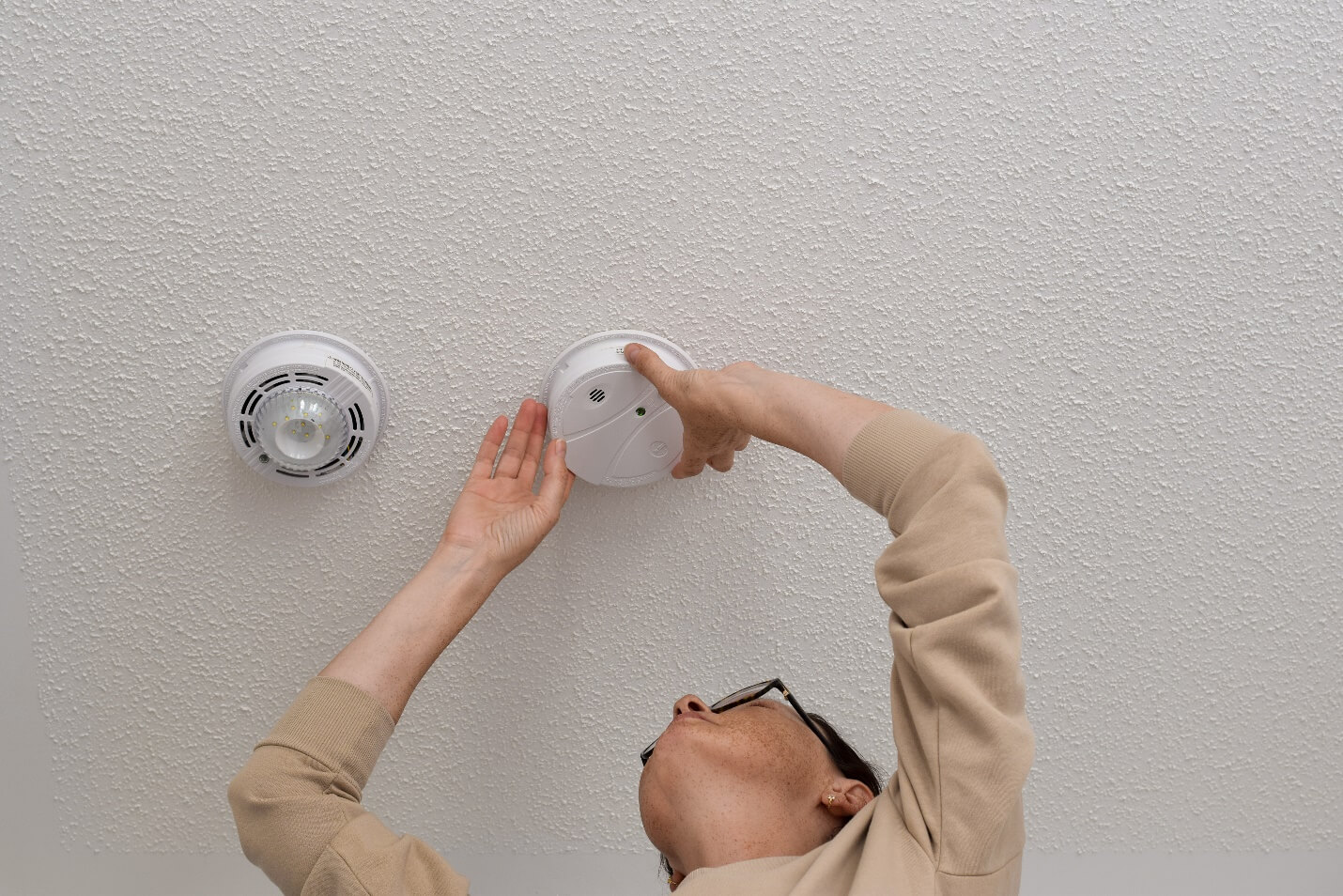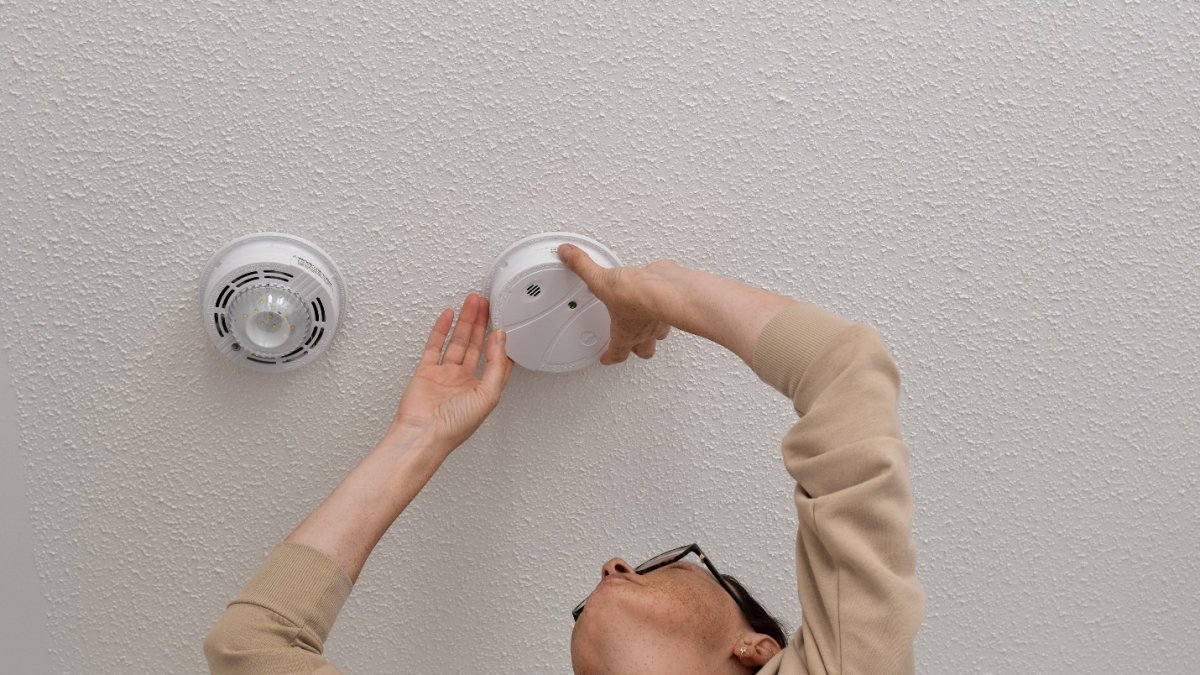
Recent studies have shown that on average more than one person dies in a house fire in Australia each week, according to a study published by Bushfire and Natural Hazards CRC. Sadly, many of these fatalities could be avoided by using smoke alarms.
Why You Need Smoke Alarms Installed in Your Home
A smoke alarm installation ensures your family and you are alerted to the presence of smoke in your home, giving you enough time to vacate the premises and avoid injury or death.
Smoke alarms are an early detection system for fires and help to prevent fatalities and limit injuries when there is a fire in your home.
Where Do You Need Smoke Alarms in Your Home?
The Building Legislation Amendment Act of 2005 states residential homes must have one smoke alarm per floor.
Whilst this is the minimum requirement, it is much better and safer to have more smoke alarms than this. Many fire services recommend having smoke alarms outside all sleeping areas and inside all bedrooms.
They should also be placed in the garage, basement, and all hallways. This may seem like too many, but this is your family’s safety at stake here; more is better in this case.
One thing to consider with smoke alarms is to not install them too close to a bathroom or kitchen. This is especially true with ionisation alarms, as you will read later. Steam and cooking smells can often set off false alerts if your alarm is too close to these rooms.
What Types of Smoke Alarms Are Available?
There are at least five different types of smoke alarms and several different ways for installing them in the home.
Photoelectric Smoke Alarms
This type of smoke alarm uses special photoelectric cells to determine combustion particles in the air. When the sensor detects these particles, it begins to sound. This type of alarm responds best to smouldering fires.
Ionisation Smoke Alarms
When smoke enters this type of alarm, it disrupts the flow of electrons between two electrically charged plates and activates the alarm. This type of alarm is best for detecting flaming fires.
Dual Sensor Smoke Alarms
A combination of photoelectric and ionisation smoke alarms, it upholds the best and worst of both, meaning don’t install it near a kitchen or bathroom (ionisation sensors are extremely sensitive to cooking and steam).
Multi-criteria Smoke Alarms
Containing multiple sensors, this alarm is less likely to give false alarms − like when you’re cooking and burn the toast − and can differentiate and respond to different types of fires. They are most often found in commercial settings.
Specialist Smoke Alarms
People suffering from hearing impairments or complete hearing loss will find it impossible to identify when an audible smoke alarm is sounding. Specialist alarms have been created with them in mind. They often feature smoke alarms and vibrating pads to alert home occupants of a fire.
Now that you understand what type of smoke alarms are available, it’s important to also know they come with four different types of power sources.
9v Battery
Whilst it is still possible to buy battery-operated smoke alarms, they are not the most reliable option as the battery can fail. There are also certain places where you are required to have hardwired smoke alarms installed.
Hardwired
Licensed electricians should be hired to install hardwired smoke alarms. This type of alarm is wired into your home’s mains power supply making for a more reliable and consistent source of power.
Hardwired + Battery
Some hardwired alarms will also contain a backup 9v battery should your power go out, but it will need to be replaced every year. Others may contain a rechargeable lithium-ion backup battery that never needs replacing.
Lithium Ion Battery Only
This type of alarm is great for places where running cables to hardwire the alarm is just not feasible. The downside is it may not be as reliable as a dual-powered alarm. It is also quite pricey, though you will save a bundle on installation costs.
You now have all the information to choose the alarms for your smoke alarm installation. Once it’s installed, you need only worry about maintenance.
Maintaining Your Smoke Alarm Installation
There are three important maintenance procedures to note with your smoke alarms.
Monthly – Once a month you will need to test your alarm’s function by pressing the ‘test’ button.
Every six months – You will need to take the vacuum cleaner to your alarms and suck up any dust or particles that may interfere with operation.
Every 10 years – Replace all smoke alarms in your home.
Wrapping It Up
Smoke alarms are vital early detection devices when it comes to smoke and fire. There are different types for the many locations in your home where they should be installed. They should be checked regularly for proper operation. Following these steps will ensure you and your family have an early warning signal in the case of a fire in your home.
Martin Ellis
Related posts
Stay connected
- How LoveOn Chat Is Becoming the Most Versatile AI Companion for Digital UsersThe internet keeps shifting toward hyper-personal interaction, and AI companions are at the center of this shift. What used to be simple chatbots are now evolving into emotionally aware, adaptive, and multi-functional digital partners. Among the new generation of platforms, LoveOn Chat is becoming one... The post How LoveOn Chat Is Becoming the Most Versatile […]

